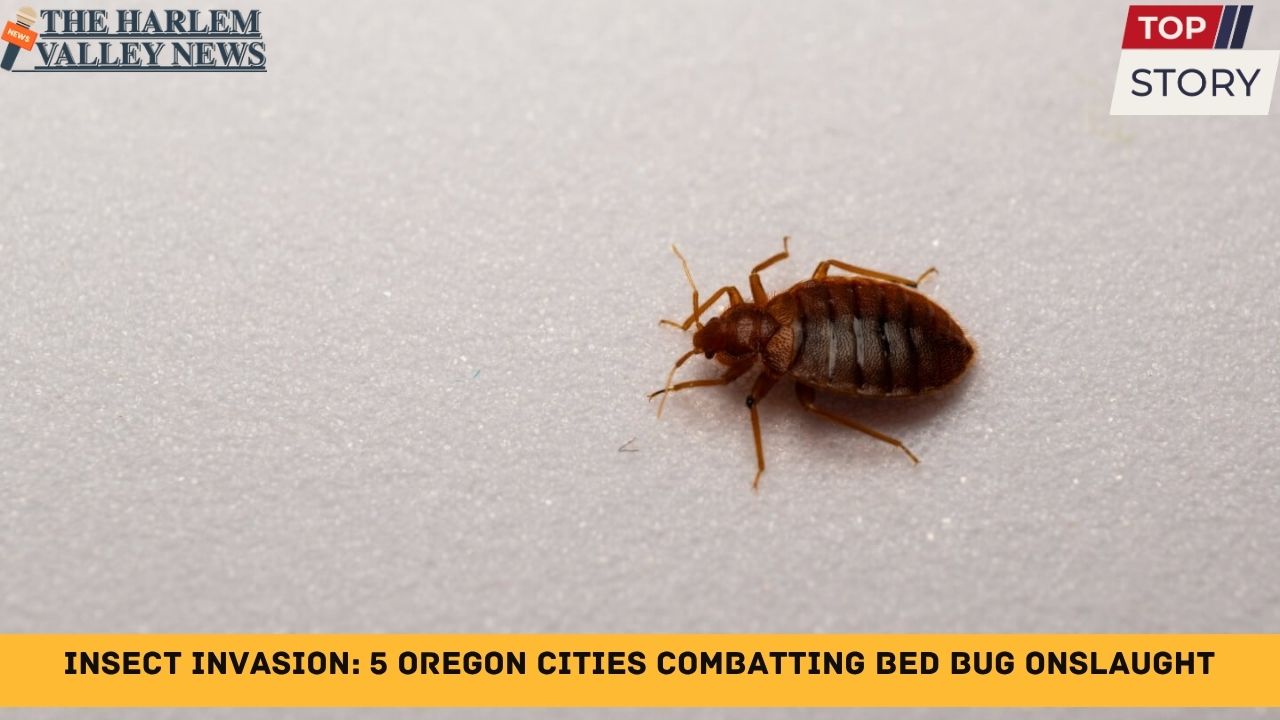Oregon, renowned for its lush landscapes and vibrant urban centers, is facing a challenge that is anything but picturesque. In recent years, bed bug infestations have surged across the state, with several cities reporting skyrocketing cases in homes, hotels, and public facilities. These tiny, elusive pests don’t discriminate—they’re found in luxury condominiums as often as cramped apartments or roadside motels. The fight against bed bugs is fierce, costly, and ongoing, especially in five major Oregon cities: Portland, Eugene-Springfield, Medford-Klamath Falls, Gresham, and Clackamas.
In this comprehensive exploration, we dive into how each of these cities is battling the bed bug crisis, what factors have contributed to the invasion, and what residents and local authorities are doing to protect their homes and communities.
The Oregon Bed Bug Problem: Growing Statistics and Hidden Costs
The bed bug epidemic in Oregon is no longer a rumor—it’s a statistical reality. According to regional surveys and pest treatment data, Oregon ranks among the states with the highest reported cases of bed bug infestations per capita. One pest management company’s annual city list placed Portland in the top tier for infestation reports, with Eugene-Springfield and Medford-Klamath Falls also making the national rankings for most affected locales.
What’s behind the surge? Climate is a major factor: Oregon’s wet, relatively mild climate provides a perfect breeding ground for bed bugs, which thrive in temperatures ranging from the low 40s°F to the high 80s°F. Increased year-round travel, both regional and international, means bed bugs hitch rides on luggage and clothing and find new places to settle all over the state’s cities. Lack of awareness and delayed detection compound the problem; many residents don’t know the telltale signs—tiny blood stains, dark fecal marks, and shed skins—until infestations become serious.
The economic impact is substantial. The cost of professional extermination for one infested home can run from hundreds to thousands of dollars, especially when multiple treatments are needed. For hotels, multi-unit housing, and public spaces, costs soar even higher, not counting lost business or reputational damage.
Portland: Battling the Urban Epicenter of Bed Bugs
As the largest city in Oregon, Portland has faced the brunt of the bed bug invasion. Infestations cluster in neighborhoods with high-density apartment buildings and frequent travel hubs, such as the city’s downtown corridor and the Lloyd District. Local authorities have teamed up with pest control experts and nonprofit organizations to launch city-wide awareness campaigns and provide resources for tenants and landlords.
Portland’s public health department distributes free bed bug educational materials and funds community workshops that teach residents how to recognize bugs, clean infested areas, and seek licensed professional help. Crucially, the city has promoted integrated pest management strategies, which combine thorough inspections, steam treatments, safe chemical use, and physical barriers like mattress encasements. Specialized housing codes allow tenants to request pest inspections, and some landlords now offer “bed bug-free guarantees” to attract wary renters.
Neighborhood associations have also stepped up: in East Portland and North Portland, volunteer task forces conduct door-to-door checks and refer vulnerable residents—particularly seniors and low-income households—to city-sponsored pest control services.
Eugene-Springfield: Science-Driven Solutions in the Willamette Valley
Farther south, the twin cities of Eugene and Springfield are renowned for their beautiful parks and university culture—but they’re also frequently listed among Oregon’s top bed bug hotspots. The Willamette Valley’s humid air and transient population of students and travelers set the stage for recurring outbreaks in dormitories, motels, and family homes.
The University of Oregon has partnered with state entomologists to research more effective treatments, including targeted heat applications, chemical cocktails, and even experimental UV light therapies, which have shown promise in damaging bed bug eggs and curbing population growth. City officials run periodic “bed bug sweeps” in student housing, and local hospitals have adapted intake procedures to screen for signs of infestation, preventing spread within medical facilities.
Eugene’s community response centers focus on outreach to vulnerable groups: every month, shelters and food banks distribute bed bug prevention kits (containing mattress covers, traps, and guides) to those at risk. Local pest control businesses offer sliding scale payment plans, ensuring treatment accessibility for all residents.
Medford-Klamath Falls: Tourism’s Role in Bed Bug Transmission
Southern Oregon’s Medford and Klamath Falls are popular gateways for tourists exploring Crater Lake and the Rogue Valley. Ironically, this constant flow of new visitors has made bed bug outbreaks more likely. Hotels, motels, and vacation rentals in both cities now conduct mandatory weekly room inspections and utilize detailed reporting systems to track pest sightings and response times.
Unlike some states, Oregon has no bed bug disclosure law for hotels or rental properties, but the tourism boards for Medford and Klamath Falls have taken a proactive approach: they work with local health departments to train hospitality staff on early detection and safe cleaning practices, and encourage guests to report suspected infestations. In some cases, businesses offer room replacement or full refunds to any traveler who discovers bed bugs, prioritizing customer safety over short-term profits.
The area’s pest control industry has responded with specialized team deployments, using a mix of steam, heat, and environmentally safe insecticides to clear tourist accommodations rapidly. Community leaders stress that education and transparency are key—bed bug stigma must be overcome so residents and visitors alike feel empowered to speak up.
Gresham: Integrated Pest Management for Suburban Challenges
Gresham, situated just outside Portland, is Oregon’s fourth-largest city and home to a diverse mix of suburban neighborhoods and business districts. As bed bug reports have increased, the city has moved beyond traditional extermination, emphasizing “Integrated Pest Management” (IPM) protocols. IPM in Gresham involves collaboration between public health officials, property managers, and pest professionals.
All new multifamily housing developments in Gresham must install physical prevention barriers—such as sealed cracks, door sweeps, and bed leg traps—to make apartments less welcoming to bugs. Residents are encouraged to reduce clutter, launder bedding in hot water, and store items off the floor, limiting hiding places for bed bugs. Free workshops teach cleaning techniques, mattress and furniture disposal, and the safe use of licensed insecticides.
Schools and daycare centers have adopted deep-cleaning schedules and monitoring systems for early warning signs, preventing bed bugs from spreading in environments with children. Gresham’s city website offers digital reporting forms, connecting residents to rapid-response pest professionals.
Clackamas: Community-Led Pest Control Efforts
Clackamas County combines rural charm with fast-growing suburbs, and its approach to pest control stands out for innovative community partnerships. Local government, neighborhood associations, and even garden clubs are collaborating to protect residences and public spaces. City staff have launched unique preventive campaigns, such as releasing large numbers of beneficial insects (ladybugs and green lacewings) to organically control populations of dangerous pests.
Homeowners in Clackamas are eligible for financial support on pest inspection and treatment costs, especially those facing economic hardship or health-related vulnerabilities. Certified pest management experts conduct free annual walk-throughs, monitoring for bed bug and termite infestations. Public libraries and recreation centers regularly host educational events for residents, dispelling myths about bed bugs, offering checklists for at-home inspection, and recommending reputable pest control companies.
Clackamas’ commitment to eco-friendly pest control methods is gaining national attention; while chemical treatment remains available, alternative approaches—like steam cleaning, mattress covers, and regular home maintenance—are encouraged whenever possible.
Statewide Efforts and Challenges
While Oregon boasts dedicated city-specific campaigns, bed bug secrecy remains a hurdle statewide. Unlike some states, Oregon’s laws protect the confidentiality of pest control treatment locations, meaning outbreaks in hotels and apartment buildings often go unreported. This lack of disclosure can slow detection and expose more residents to infestation. Advocacy groups continue to push for stronger transparency requirements, arguing that stigma and secrecy worsen the problem.
State health agencies, meanwhile, offer extensive online resources: downloadable fact sheets, prevention guides, and phone hotlines connect Oregonians to the information and help they need. The Oregon Department of Agriculture monitors pest control companies for compliance, ensuring treatments are safe and effective. New scientific studies are underway exploring future solutions, from improved chemical resistance management to novel approaches like UV light extermination.
What Residents Can Do: A Quick Guide
With bed bugs on the rise, every Oregonian should know the basics of prevention and response. The following steps are recommended across all major cities:
-
Inspect sleeping areas regularly: Look for signs of bed bugs—tiny blood spots, dark stains, shed skins—on mattresses, box springs, and furniture.
-
Reduce clutter: Keep homes tidy and store items in sealed containers to limit hiding spots.
-
Launder bedding and clothes: Wash items in hot water (at least 120°F) and dry on high heat to kill bugs and eggs.
-
Use protective covers: Encase mattresses and box springs in covers specially designed to block bed bugs.
-
Vacuum frequently: Use a vacuum to clean crevices, carpets, and furniture, and dispose of vacuum bags immediately.
-
Avoid secondhand furniture: If purchasing used items, inspect and clean thoroughly before bringing them home.
-
Report infestations: Notify landlords, property managers, or public health agencies if you suspect a bed bug problem.
-
Seek professional help: Hire licensed pest control experts with experience in bed bug protocols, especially for large or persistent infestations.
Looking Forward: The Bed Bug Battle Continues
The war against bed bugs in Oregon is ongoing, with each city devising new strategies to combat the invasion. Through scientific innovation, community engagement, and public education, Oregon’s major urban centers are taking meaningful action to reduce infestations and protect residents. Whether you’re in bustling Portland, the college towns of Eugene and Springfield, the tourist routes of Medford and Klamath Falls, the suburbs of Gresham, or the rural-urban mix of Clackamas, vigilance and collective action are key.
As the climate changes and travel continues to grow, Oregon’s experience offers vital lessons for cities nationwide: bed bug epidemics demand not just reactive treatments but proactive, coordinated community efforts. By breaking the stigma and encouraging transparency, education, and scientific advancement, Oregon cities are leading the way in the relentless fight against these unwanted insects.
Closing Thoughts
No home is immune to bed bugs, and their presence is never a reflection of cleanliness or social status. Through united efforts across Oregon’s most affected cities, progress is being made. Residents are better informed, prevention is prioritized, and new solutions are on the horizon. With determination, collaboration, and the right tools, Oregon continues to battle back against the bed bug onslaught—proving that even the smallest enemies can be conquered when communities stand together.















Leave a Reply